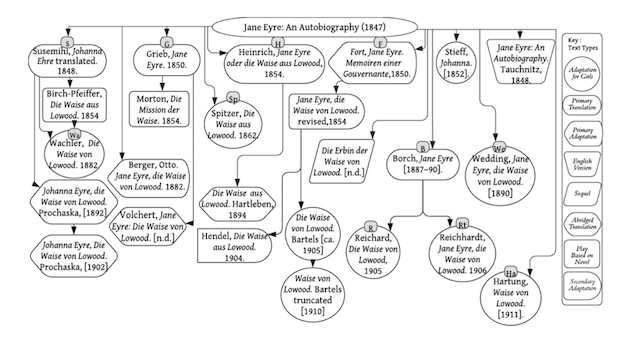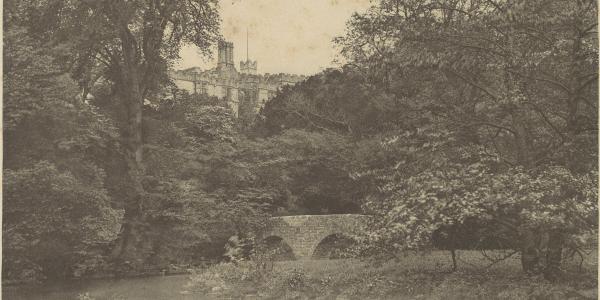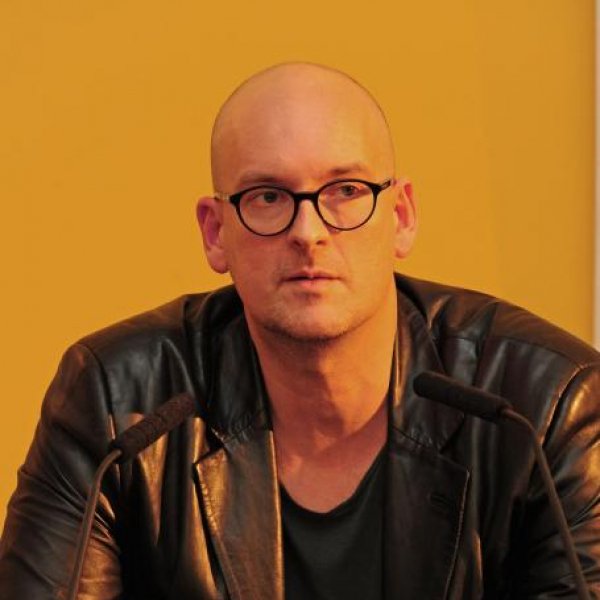Lynne Tatlock’s new book examines the longstanding German fascination with Charlotte Brontë’s novel.

For more than 50 years, beginning in the mid-19th century, one of the most well-known romances in Germany centered on an orphaned young governess and a gruff older man – characters first imagined in a different language and hundreds of miles away. What did it take for Jane Eyre to remain popular with German readers for this period?
Lynne Tatlock, the Hortense and Tobias Lewin Distinguished Professor in the Humanities, says the translation and adaptation history of Jane Eyre in Germany tells a story about how literature moves across national borders in a moment when more and more people were reading, a good many of them women. In a new book, Jane Eyre in German Lands: The Import of Romance, 1848-1918 (Bloomsbury), Tatlock maps the novel’s journey across translations and into a new brand of romance fiction.
Charlotte Brontë’s novel appeared in German in three main forms: more or less faithful translations, adaptations that could differ wildly from the original text, and imitations that reproduced the dynamics of Jane Eyre in new and inventive ways. Translations sometimes shortened the story, and adaptations modified the novel for the theater or for young girls.
“I'm interested in the multiple creative acts that were involved in that circulation,” Tatlock said. “So often, people think of the transfer of culture in terms of new products, and what I was really interested in is what people did with old products.”
Jane Eyre caught Tatlock’s attention when she was researching her earlier book about German literature in the English-speaking world, German Writing, American Reading: Women and the Import of Fiction, 1866-1917. She discovered that American readers of E. Marlitt in English translation were also reading Jane Eyre and wondered how Brontë's novel had fared with German readers in German translation on the other side of the Atlantic. A prolific author of popular romance novels in Germany, Marlitt stood out because so many of her novels seemed to be imitations of Jane Eyre. While Marlitt did not reproduce the plots of Bronte’s novel directly, her own novels display a deep understanding of the dynamics of Jane Eyre, such as the relationship of the heroine to the male protagonist.
Jane Eyre had traveled from England to Germany and then back in English for a group of German-American readers, and, like any seasoned traveler, Jane Eyre was changed by her voyages.

shows the genealogy of the translations, adaptations, and imitations of Jane Eyre in print.
“Women read the story in different versions. One woman recounted having read an adaptation as an eight-year-old and then a translation about five years later. As a young girl, she recognizes that these are two very different versions of the story, but it doesn't seem to bother her,” Tatlock said. “This is the sort of thing that a professional reader would make a huge fuss about, but instead the girl thinks, ‘Oh, good, my favorite story. Now let's see what happens in this one.’”
Over a 20-year period, Marlitt would tap into that sentiment by writing ten novels that revisited the story and tropes of Jane Eyre again and again in different configurations. While many (largely male) critics panned Marlitt’s writing as derivative and repetitive, the books were wildly popular. Marlitt was the premier author of Die Gartenlaube, a German family magazine that would be read aloud by family members to each other. Marlitt was so instrumental to the magazine’s success that the publisher later bought her a villa to thank her for making his fortune.
Tatlock says that Jane Eyre’s enduring popularity in Germany was symptomatic of a moment when German women were increasingly negotiating public life through literature, mirroring the novel’s own interest in navigating conflict through language. Though men and women read both read Marlitt widely at first, women increasingly formed her readership as the nineteenth century came to a close.
“Jane Eyre has stayed around for so long because of the way the relationship between the story’s hero and heroine is realized through conversation. This antagonistic relationship between two people is reconciled through an intelligent woman using words to achieve equality,” Tatlock said. “The piece ends with the couple’s happiness, which the narrator describes as their having a conversation all day long.”




